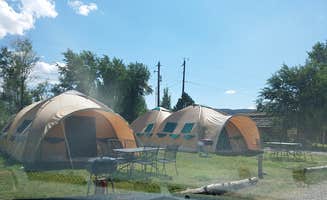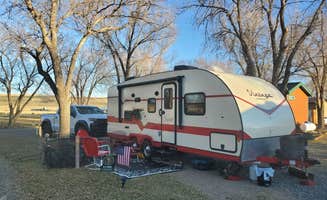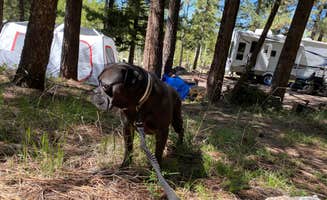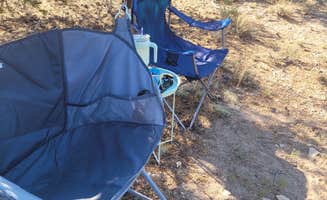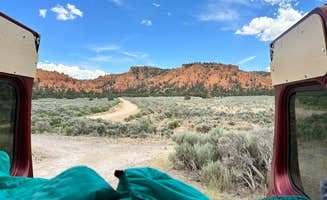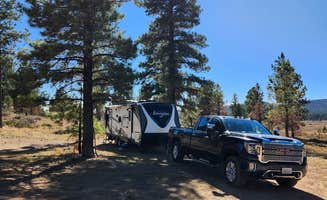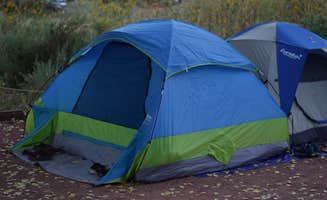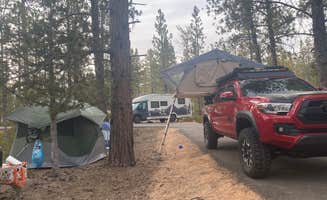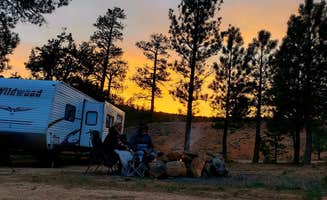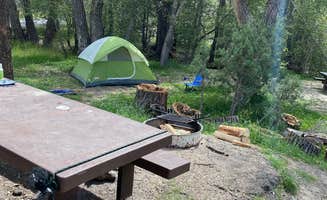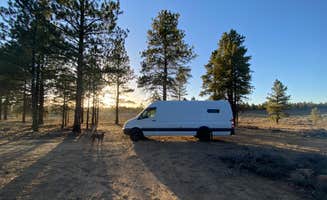Dispersed camping in Dixie National Forest offers alternatives to developed campgrounds between spring and fall when high elevation areas remain accessible. This region connects the Great Basin to the Colorado Plateau, creating diverse landscapes from 5,400 to over 10,000 feet in elevation. Winter temperatures at higher elevations can drop well below zero degrees Fahrenheit, making lower elevation spots like Red Canyon and areas near Panguitch Lake more suitable for off-season camping.
What to do
Mountain biking on Thunder Mountain Trail: Located near Tom Best Spring Road FR117 Dispersed, this moderate trail offers technical sections through hoodoo formations. "Social or secluded...Close to Bryce Canyon and easy access to Thunder Mountain trail loop, awesome moderate mt biking trail," notes Jeanie P.
Hiking to viewpoints: The trails behind Red Canyon Campground provide excellent hiking with fewer crowds. "The hiking paths behind the campground are easy and fun, with spectacular views and NO crowds!! During the day, the campground is quite noisy from Scenic Highway 12, but it's peaceful after 5 pm," according to Colette K.
Wildlife viewing at dusk: Park rangers recommend Road 087 toward the reservoir for wildlife spotting. Anthony P. shared about Great Western Trail Dispersed: "Note on the map, if you follow road 087 down towards the reservoir, the Park Service recommends this as the best place to view wildlife before dusk."
What campers like
Designated dispersed sites: Dave's Hollow offers organized free camping just outside Bryce Canyon. "Dave's Hollow Designated Camping has quite a few sites but seems to fill up quickly since it's just outside of Bryce Canyon NP. There are designated campsites," explains Angela M. from FR 090 dispersed camping.
Privacy between sites: Many dispersed areas offer good separation between campers. "This was our favourite site in our trip, we took the first left and there were barely any people down that way. Our area had tons of trees so it felt quite private and was very spread out from the people beside us," says Maddy T. about Toms Best Spring Road.
Hot showers for day hikers: Weary hikers can access pay showers even without camping. "The showers are fantastic and are available for a cost for non-campers also," notes Heather S. about Rubys Inn RV Park and Campground.
What you should know
Seasonal road closures: Many forest roads close in winter or during wet weather. "It's a beautiful area but with the recent weather the road into the camping area was closed. Very wet and slick mud," reports Kristine G. about FR 090.
Weather extremes: Temperatures swing dramatically between day and night, even in summer. "We stayed in September and by the middle of the night it was about 20 degrees so bundle up!!" warns Emily from North Campground.
Camping restrictions: Not all forest roads permit camping throughout their length. "Like the other reviewers mentioned, there's a camp restriction at the first .5 mile in but if you keep going you'll find some really nice large spots with fire rings and perfectly spaced trees to put up your hammock," says Yasmeen A. about Great Western Trail Dispersed.
Cell service variability: Coverage depends on location and provider. "Great cell service in the area," reports Christine about FR117, while other remote areas have limited to no service.
Tips for camping with families
Junior Ranger programs: These offer educational activities for children. "The junior ranger program was awesome!" mentions Kelley H. about North Campground at Bryce Canyon.
Community campfire events: Some campgrounds host social gatherings. Kelly N. shares about Hitch-N-Post RV Campground: "They hold a weekly bon fire, and offer morning coffee (sometimes with baked treats!) There is a dog park, horseshoe and cornhole courts."
Easy wildlife encounters: Children can spot deer and other animals near campsites. "Lots of wildlife walking around our tent area at night. It's very clean with a few fire pits and is a great temperature in early August," notes Henry W. about Great Western Trail.
Tips from RVers
Site leveling challenges: Many areas require work to level larger vehicles. "RV spots are pretty exposed & mine was on a hill w/ only one levelish portion (53). Ended up in loop D tent area (93) and it seems like many camper van folks end up here," shares Beverly O. about North Campground.
Accessibility for larger rigs: Some dispersed areas accommodate big vehicles. "Plenty of available sites, many drive through. Many could accommodate our 35' motorhome. Among the tall pines yet enough sunlight for solar panels," notes Tom W. about FS #117 Rd Dispersed Camping.
Early arrival recommendation: Free sites fill quickly, especially on weekends. "I'd say get here by 4P for a guaranteed spot on the weekend. Beautifully shaded open sites. About 3-5acres/site," advises Jeff P. regarding FR 090 dispersed camping.


